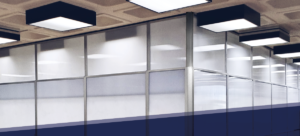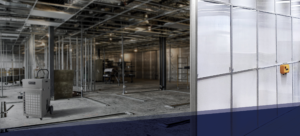7 FAQ's About Asbestos Abatement Equipment
Frequently asked questions about HEPA-AIRE® Negative Air Machines for asbestos abatement.
Does the machine actually produce the airflow you think you’re getting?
One of the most confusing, inaccurate and potentially misleading methods of testing this is ‘free air’, which is nothing more than the test bench rating of the blower. The airflow produced by the device will be up to 60% lower when the blower is enclosed in a cabinet and must pull air through the resistance of the filters.
The airflow comparison chart shows that the true airflow of negative air machines can vary substantially from brand-to-brand because different suppliers use different rating methods and components. Click here to view the chart.
Does the HEPA filter truly provide 99.97% HEPA filtration?
A filter made with HEPA media may or may not provide true HEPA efficiency. Serious leakage can go undetected if filters are not individually tested and certified at the end of the manufacturing process in accordance with IEST-RP-CC001.3 guidelines for Type A HEPA filters. Even the tiniest pinhole leaks in the media or breach of the seal between the media pack and the filter frame can cause the filter to fail efficiency requirements. If this happens, contaminated air can pass through the filter and be exhausted into ‘clean’ areas of the facility.
HEPA testing requires very specific procedures using a thermally generated mono-dispersed aerosol and a laser particle counter. Test results, including test airflow, percent penetration, date of manufacture and other detailed information must be included on a label affixed to the filter. Testing should be conducted at the rated airflow of the machine. A filter designed for and tested at 1,000 cfm or 1,100 cfm may provide significantly lower efficiency at 2,000 cfm. If the filter label simply states “99.97% HEPA Filter” or “2,000 CFM HEPA Filter”, but does not include all of the detailed testing information, it’s probable that the filter has not been individually tested.
Is the machine designed to prevent bypass leakage around the HEPA filter?
Even the best HEPA filter can’t prevent contamination problems if the machine is not designed to prevent contaminated air from bypassing the filter. Look for important contaminated air bypass prevention features such as:
• Flat, rigid HEPA sealing frames with no welds or other surface irregularities that can disrupt the seal
• Seamless poured closed-cell neoprene gaskets or silicone gel seals as opposed to gaskets with seams or made from open cell foam
• Solid rivet fasteners versus weaker and potentially leaky hollow pop-rivets or metal screws.
• Sealed control panels
Is the machine safe?
Why take the chance on an untested and potentially unsafe machine? OSHA (U.S.) and CSA (Canada) require electrical safety testing and certification by an approved Nationally Recognized Testing Laboratory (NRTL), such as UL, CSA or ETL. This overall testing is required even if the individual electrical components are all NRTL listed.
Contractors may be surprised to learn that the HEPA-AIRE® Negative Air Machines manufactured by Abatement Technologies® are currently one of the few brands that meets these requirements. All Abatement Technologies negative air machine models are certified by a Nationally Recognized Testing Laboratory (NRTL)., and carry their ETL/ETLC mark for safe operation on 115V/15A electrical supplies.
What makes HEPA filters so efficient?
The ultra-fine, glass-fiber medium captures microscopic particles that can easily pass through other filters by a combination of diffusion, interception and inertial impaction. To qualify as a Type A HEPA filter, the filter must capture at least 99.97% of particles 0.3 microns in size–about 300 times smaller than the diameter of a human hair, and 25 to 50 times smaller than we can see. To a HEPA filter, catching a one-micron particle is like stopping a cotton ball with a door screen.
Why is the testing done with a 0.3-micron particle size test aerosol?
Filter efficiency studies have shown that 0.3-microns is the "Most Penetrating Particle Size (MPPS)" for HEPA filter media. Efficiency is typically greater than 99.97% against larger or smaller particle sizes. Particles larger than 0.3 microns are typically more easily trapped, or intercepted, by the media. Smaller particles often lack sufficient mass to penetrate the media.
Does HEPA efficiency decrease as the filter gets dirty?
No. The dirtier a HEPA filter gets, the more efficient it typically becomes.
Have another question? Contact us



